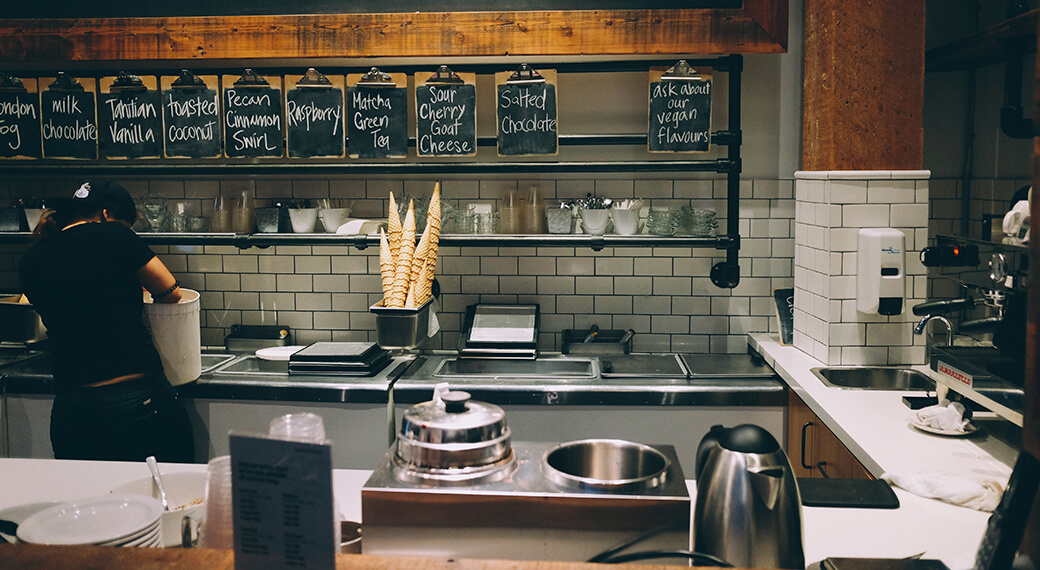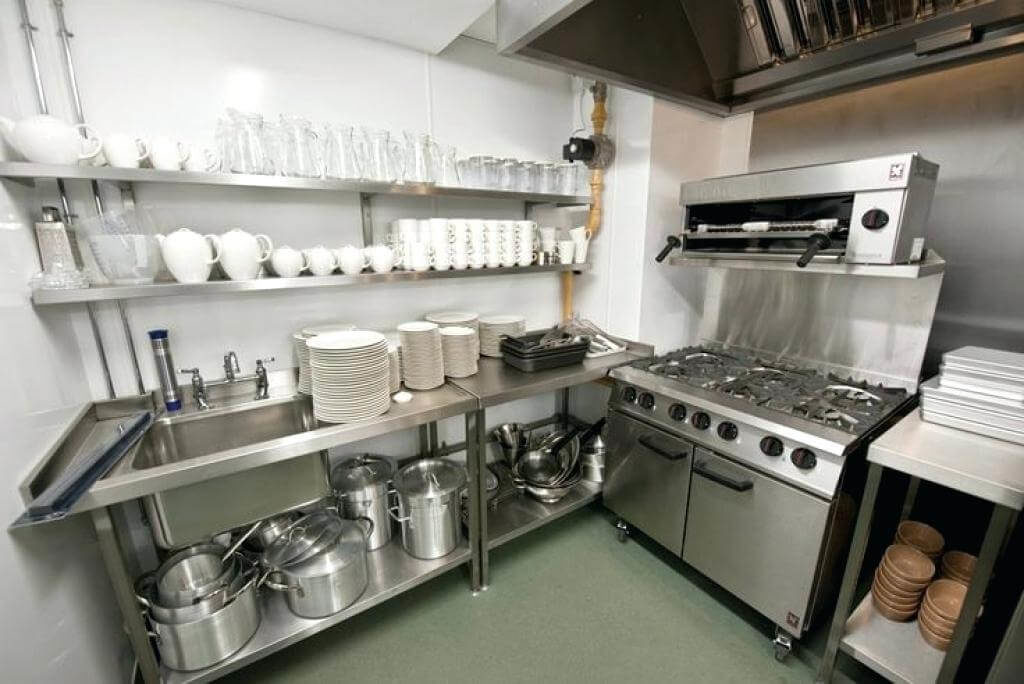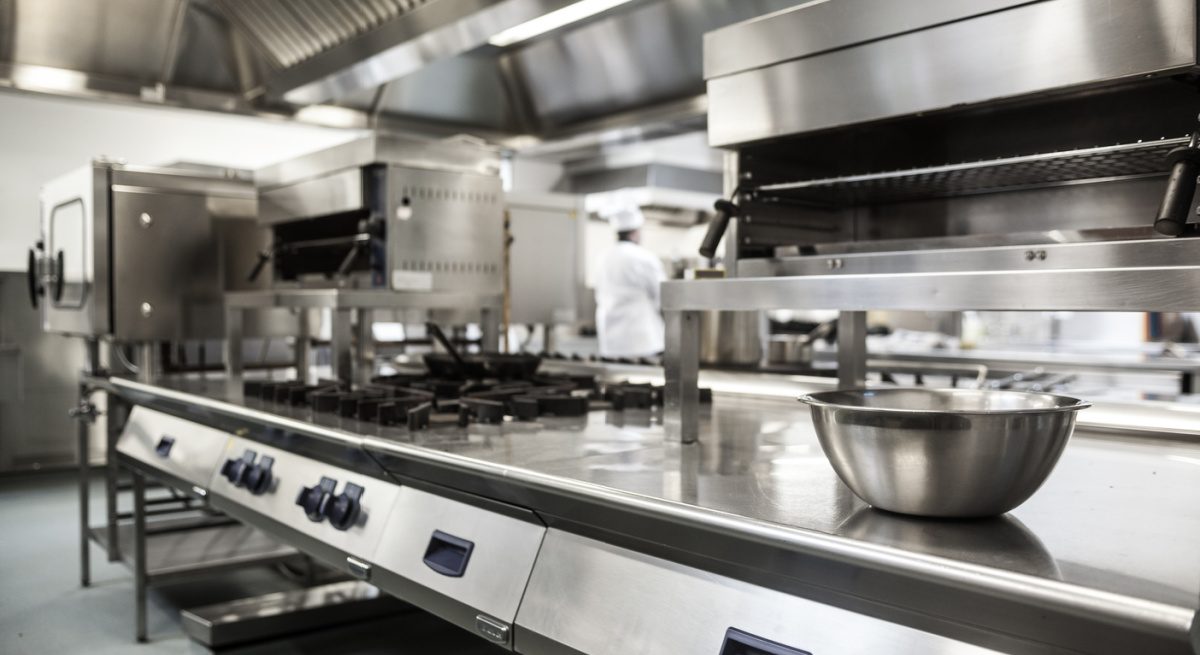Restaurant Kitchen Ideas: From Chaos to Culinary Magic
Restaurant Kitchen Ideas: From Chaos to Culinary Magic
A restaurant kitchen is the heart and soul of any dining establishment. It's where culinary dreams are born, where ingredients transform into delectable dishes, and where the symphony of flavors takes shape. But a restaurant kitchen can also be a chaotic space, a whirlwind of activity where efficiency and organization are paramount.
Transforming your restaurant kitchen from a potential source of stress into a well-oiled machine that fuels culinary excellence is a journey that requires careful planning and thoughtful execution. This blog post will delve into a treasure trove of kitchen ideas designed to inspire you, offering practical solutions for every stage of the restaurant lifecycle, from startup to expansion.
I. The Foundation: Planning for Success
The foundation of a successful restaurant kitchen lies in meticulous planning. Every detail matters, from the layout and equipment to the flow of traffic and the implementation of safety protocols.
1. Layout and Design: Optimizing Workflow
The kitchen layout should be designed with efficiency in mind. The goal is to create a smooth flow of food preparation, cooking, and plating, minimizing unnecessary movements and maximizing productivity. Consider these key factors:
- The Golden Triangle: Imagine a triangle connecting the three primary work stations: prep area, cooking station, and dishwashing area. This principle minimizes distance traveled, ensuring that movement within the kitchen is swift and efficient.
- Workstation Placement: Strategically place each workstation based on its primary function. The prep area should be located near the storage of raw ingredients, while the cooking station should be close to the hot equipment and the dishwashing area near the dish return station.
- Traffic Flow: Ensure that there are clear walkways to facilitate easy movement of staff and supplies, minimizing the risk of accidents and bottlenecks. Consider incorporating designated pathways for different tasks, such as a separate aisle for deliveries and a separate walkway for serving food.
2. Essential Equipment: Investing in Culinary Excellence
Restaurant kitchen equipment plays a crucial role in both the quality and speed of food preparation. The right tools can make a world of difference in creating culinary masterpieces. Here are some essential items to consider:
- Cooking Equipment: This includes essential items like ovens, ranges, grills, fryers, and steamers. The choice of equipment depends on the menu and the size of the restaurant. Consider investing in energy-efficient appliances to save money on utility bills.
- Preparation Equipment: A well-equipped prep area will include essential items like food processors, blenders, mixers, slicers, and choppers. These tools can significantly speed up the preparation process and enhance the overall quality of the dishes.
- Refrigeration and Storage: Investing in a reliable refrigeration system is essential for preserving the quality of ingredients and maintaining food safety. Storage solutions like walk-in refrigerators, freezers, and dry storage areas ensure that ingredients are organized, accessible, and protected from spoilage.
- Dishwashing and Sanitation: A dedicated dishwashing area equipped with dishwashers, sanitizers, and other cleaning equipment is essential for maintaining hygiene and ensuring food safety.
3. Safety First: Creating a Secure Environment
Restaurant kitchen safety is paramount, both for employees and for customers. Implement these essential protocols:
- Fire Safety: Ensure that all kitchen staff is trained on fire safety procedures and that fire extinguishers and other safety equipment are readily available.
- Food Safety: Implement HACCP (Hazard Analysis and Critical Control Points) protocols to ensure that food is handled, prepared, and stored according to the highest safety standards. This includes regular temperature checks, proper handwashing practices, and maintaining a clean and hygienic kitchen environment.
- Employee Safety: Train employees on the safe use of equipment and the importance of following safety protocols. Provide proper footwear, protective gear, and regular safety training to minimize the risk of injuries.
II. Enhancing Functionality: Optimizing Operations
Once the foundation is laid, focus on enhancing the functionality of your restaurant kitchen to optimize operations and ensure smooth and efficient workflows.
1. Storage Solutions: Maximizing Space and Organization
Effective storage solutions are crucial in a restaurant kitchen for maintaining order, preserving ingredient freshness, and maximizing space. Consider these ideas:
- Vertical Storage: Utilize wall-mounted shelves, cabinets, and rack systems to maximize vertical space and create organized storage solutions for everything from dry goods and canned goods to kitchenware and cleaning supplies.
- Refrigeration and Freezer Optimization: Implement a system for rotating stock, keeping the oldest items at the front and the newest items at the back. Label all containers clearly and use organizers within refrigerators and freezers to maximize efficiency.
- Designated Storage Areas: Create separate storage zones for different types of ingredients, such as a dedicated area for fresh produce, another for dry goods, and another for frozen items. This ensures that ingredients are easily accessible and prevents cross-contamination.
2. Workflow Optimization: Streamlining Operations
Streamlining workflows in a restaurant kitchen is essential for maintaining efficiency, reducing stress, and ensuring consistent quality.
- Line Management: Implement a clear line system for preparing food, with designated stations for each dish. This helps to prevent bottlenecks and ensure that orders are prepared in a timely manner.
- Prep Work Scheduling: Schedule prep work efficiently, ensuring that ingredients are prepped well in advance of peak service hours. This eliminates last-minute rush and promotes a smoother workflow.
- Communication Protocols: Establish clear communication protocols between kitchen staff and servers. Implement a system for taking orders, confirming orders, and delivering food promptly and accurately.
3. Technology Integration: Embracing Efficiency
Integrating technology into your restaurant kitchen can dramatically improve efficiency, communication, and overall operations.
- Point of Sale (POS) Systems: Modern POS systems allow for real-time order tracking, inventory management, and customer data analysis.
- Kitchen Display Systems (KDS): KDS systems streamline order fulfillment, ensuring that the correct orders are sent to the correct station in a timely manner.
- Inventory Management Software: This type of software helps you track inventory levels, identify stock shortages, and optimize ordering processes.

III. Building a Culinary Culture: Fostering Teamwork and Excellence
A thriving restaurant kitchen is not just about equipment and efficiency; it's about fostering a strong culinary culture. This involves creating a positive work environment, nurturing creativity, and building a team that thrives on excellence.
1. Team Building and Communication: Promoting Collaboration

Strong teamwork is the backbone of a successful restaurant kitchen. Invest in team building activities, encourage open communication, and foster a culture of mutual respect and collaboration.
- Regular Team Meetings: Host regular team meetings to discuss workflow, menu updates, and any challenges or opportunities.
- Open Communication Channels: Create an environment where staff feel comfortable sharing ideas and suggestions.
- Cross-Training: Provide opportunities for staff to cross-train in different areas of the kitchen, fostering versatility and understanding of different roles.
2. Creativity and Innovation: Nurturing Culinary Growth

A restaurant kitchen should be a space for culinary exploration. Encourage staff to experiment with new ingredients, techniques, and flavor combinations.
- Chef's Table Events: Organize special chef's table events where staff can showcase their creative dishes and receive feedback from guests.
- Ingredient Exploration: Encourage staff to explore new ingredients and culinary traditions, expanding their culinary knowledge and inspiring new menu ideas.
- Taste Tests: Host regular taste tests to evaluate new recipes and dishes, allowing staff to provide feedback and collaborate on menu development.
3. Professional Development: Investing in Skill Enhancement
Investing in the professional development of your kitchen staff is an investment in the long-term success of your restaurant.
- Culinary Courses: Encourage staff to take culinary courses to refine their skills and expand their knowledge.
- Workshops and Seminars: Provide opportunities for staff to attend workshops and seminars on topics such as knife skills, food safety, or specific cooking techniques.
- Mentorship Programs: Establish mentorship programs where experienced chefs mentor newer staff members, sharing their knowledge and experience.
IV. Sustainable Practices: Embracing Environmental Responsibility

In today's world, it's crucial to incorporate sustainable practices into all aspects of your restaurant kitchen to minimize your environmental impact and build a more responsible business.
1. Energy Efficiency: Reducing Consumption and Costs
- Energy-Efficient Appliances: Invest in energy-efficient equipment like refrigerators, ovens, and dishwashers.
- LED Lighting: Switch to LED lighting in your kitchen, reducing energy consumption and improving lighting quality.
- Water Conservation: Implement water-saving measures in your kitchen, such as low-flow faucets and water-efficient dishwashers.

2. Waste Reduction and Recycling: Minimizing Food Waste
- Composting: Implement a composting system to reduce food waste and turn it into valuable organic matter for your garden.
- Waste Reduction Strategies: Reduce food waste by using creative strategies like portion control, careful inventory management, and utilizing leftover ingredients in innovative ways.
- Recycling: Ensure that your kitchen has designated recycling bins for different materials, such as paper, plastic, and glass.
3. Sourcing Locally and Seasonally: Supporting Local Farmers and Sustainability

- Local Produce: Support local farmers and prioritize using seasonal produce to reduce transportation costs and minimize your carbon footprint.
- Sustainable Seafood: Choose sustainably caught seafood from certified sources to protect marine ecosystems.
- Ethical Sourcing: Ensure that all ingredients are sourced ethically and responsibly, supporting farmers and suppliers who prioritize sustainable practices.
V. Future-Proofing Your Restaurant Kitchen: Embracing Innovation and Adaptability
As the restaurant industry evolves, it's essential to future-proof your restaurant kitchen by embracing innovation and adaptability.

1. Automation and Robotics: Leveraging Technology
- Robotic Arms: Consider incorporating robotic arms for tasks such as food preparation and dishwashing, increasing efficiency and freeing up staff for other tasks.
- Automated Ordering Systems: Invest in automated ordering systems that streamline communication between kitchen staff and servers, improving efficiency and accuracy.
2. Culinary Trends: Staying Ahead of the Curve

- Emerging Cuisine: Research and stay informed about emerging culinary trends and techniques, adapting your menu and culinary style to cater to evolving customer preferences.
- Vegan and Vegetarian Options: Offer a range of delicious and creative vegan and vegetarian options to cater to the growing number of plant-based eaters.
- Personalized Dining: Consider incorporating personalized dining experiences, allowing customers to customize their meals or choose from a wider selection of options.
VI. Conclusion: Building a Culinary Masterpiece
A restaurant kitchen is a dynamic space where creativity, efficiency, and sustainability converge. By implementing these kitchen ideas and embracing a culture of innovation and collaboration, you can transform your kitchen from a chaotic space into a culinary masterpiece.

Remember, the journey to create a successful restaurant kitchen is an ongoing process. Continuously assess your needs, adapt to industry trends, and invest in the development of your staff. By embracing these principles, you'll create a kitchen that fuels culinary excellence and nourishes your business for years to come.
Restaurant Kitchen Ideas: Level Up Your Food Game!
A restaurant kitchen is the heart and soul of your business. It’s where the magic happens, where ingredients transform into culinary masterpieces that delight your customers. But a well-functioning kitchen is more than just a space for cooking; it’s a carefully orchestrated system that ensures efficiency, safety, and quality.
This article will delve into restaurant kitchen ideas that can help you level up your food game, optimize your workflow, and enhance your overall culinary experience. We’ll explore everything from design and layout to equipment and technology, and offer practical advice on how to create a kitchen that empowers your team and inspires your guests.
Design and Layout: Maximizing Efficiency and Flow
1. The Golden Triangle: A Layout for Success
The golden triangle is a fundamental principle in kitchen design. It suggests that the three most frequently used areas – preparation, cooking, and cleaning – should be strategically placed to form a triangular shape. This layout minimizes wasted steps and maximizes efficiency.
- Preparation Area: This zone includes worktables, cutting boards, sinks, and refrigeration.
- Cooking Area: Here, you'll find your stovetops, ovens, grills, and other cooking equipment.
- Cleaning Area: The sink, dishwasher, and waste disposal are located in this crucial zone.
2. The Power of Workstations:
Workstations are designated areas within the kitchen dedicated to specific tasks. For example, you could have a dedicated salad station, a grilling station, or a pastry station. This approach promotes specialization, increases productivity, and reduces cross-contamination.
- Customization: Designate workstations based on your menu offerings, staff expertise, and volume of orders.
- Clear Boundaries: Establish clear boundaries for each workstation to avoid confusion and improve orderliness.
3. Ample Storage and Organization:
Storage is key to a well-organized kitchen. Efficiently storing ingredients, equipment, and supplies will prevent clutter and keep your workspace safe and accessible.
- Designated Areas: Create specific storage areas for different types of items, such as dry goods, perishables, and utensils.
- Labeling System: Implement a clear labeling system for all storage containers and shelves. This will make it easy for staff to find what they need quickly.
- Vertical Storage: Utilize vertical space by implementing shelving systems, wall-mounted organizers, and hanging racks.
4. Ergonomics for Comfort and Efficiency:
Ergonomics is the science of designing workspaces and tools to optimize comfort and efficiency. A well-designed kitchen considers the physical needs of your staff.
- Adjustable Workstations: Invest in adjustable height workstations to accommodate staff of different heights.
- Comfortable Seating: Provide comfortable seating for staff who need to take breaks or perform tasks that require prolonged standing.
- Proper Lighting: Ensure adequate lighting throughout the kitchen to prevent eye strain and improve visibility.
Equipment and Technology: Tools for Success
1. Choosing the Right Equipment:
Equipment is the backbone of your restaurant kitchen. Invest in high-quality, reliable equipment that meets your specific needs and workflow.
- Cooking Equipment: Choose cooking equipment that aligns with your menu and cuisine. Consider ovens, stoves, grills, fryers, and specialized equipment like woks or tandoori ovens.
- Preparation Equipment: Essential preparation equipment includes blenders, food processors, mixers, slicers, and grinders.
- Refrigeration: Ensure you have adequate refrigeration for storing perishables, including walk-in refrigerators, reach-in refrigerators, and under-counter refrigerators.
2. Embracing Technology:

Technology is transforming the restaurant industry, enhancing efficiency, communication, and customer experience.
- Point of Sale (POS) Systems: Streamline order taking, payment processing, and inventory management with a modern POS system.
- Kitchen Display Systems (KDS): KDS systems display orders in real-time, ensuring clear communication between the front and back of house.
- Online Ordering Platforms: Expand your reach and customer base by integrating with online ordering platforms.
3. Maintaining Your Equipment:

Maintenance is crucial to extending the lifespan of your equipment and ensuring optimal performance.
- Regular Cleaning and Sanitizing: Establish a consistent cleaning and sanitizing schedule for all kitchen equipment.
- Preventative Maintenance: Schedule regular preventative maintenance checks to identify and address potential issues before they become major problems.
- Documentation: Keep detailed records of equipment maintenance to track repairs, replacement parts, and warranty information.
Creating a Safe and Hygienic Environment

1. Implementing Food Safety Protocols:
Food safety is paramount in any restaurant kitchen. Strict protocols should be in place to prevent foodborne illness and ensure customer safety.
- HACCP (Hazard Analysis and Critical Control Points): Implement a HACCP plan to identify potential hazards at each stage of food handling and implement measures to control them.
- Temperature Control: Maintain proper temperatures for storing and cooking food. Use thermometers to monitor temperatures regularly.
- Cross-Contamination Prevention: Implement procedures to prevent cross-contamination between raw and cooked food.
2. Maintaining Cleanliness:
Cleanliness is essential for a safe and efficient kitchen. Establish a robust cleaning schedule and ensure all staff members are trained in proper sanitation procedures.
- Regular Cleaning: Designate areas for cleaning tasks and provide staff with the necessary tools and cleaning supplies.
- Disinfection: Use appropriate disinfectants to sanitize surfaces, utensils, and equipment.
- Waste Management: Implement a proper waste management system, including designated bins for different types of waste.

3. Employee Training:
Training is crucial to ensure your staff understands and follows food safety and hygiene protocols.
- Food Safety Certification: Encourage staff to obtain food safety certifications.
- Regular Training Sessions: Conduct regular training sessions to reinforce food safety protocols and address any questions or concerns.
- Documentation: Maintain records of employee training sessions to ensure compliance with regulations.

Cultivating a Positive and Productive Kitchen Culture
1. Communication and Teamwork:
Effective communication is essential for a well-functioning kitchen. Encourage open communication among staff members, including managers, chefs, and line cooks.

- Clear Lines of Communication: Establish clear lines of communication to ensure everyone is informed about orders, changes in the menu, and any other relevant information.
- Team Meetings: Hold regular team meetings to discuss performance, address concerns, and celebrate successes.
2. Respect and Appreciation:
Respect and appreciation are key ingredients for a positive kitchen culture. Encourage staff to treat each other with respect, acknowledge their contributions, and celebrate their successes.

- Positive Reinforcement: Use positive reinforcement to encourage good performance and motivate staff.
- Recognition and Rewards: Recognize and reward staff members for their hard work and dedication.
3. Motivation and Empowerment:
Motivated and empowered staff are more likely to be productive and dedicated. Create a work environment that fosters creativity, encourages innovation, and allows staff to contribute their ideas.

- Professional Development Opportunities: Provide opportunities for staff to learn new skills and advance their careers.
- Delegation and Responsibility: Delegate tasks and responsibilities to empower staff and build their confidence.
Final Thoughts: Building a Successful Kitchen
A restaurant kitchen is more than just a space for cooking. It's a dynamic environment that requires careful planning, efficient organization, and a commitment to quality, safety, and customer satisfaction.

By incorporating the restaurant kitchen ideas outlined in this article, you can create a kitchen that is not only functional and efficient but also inspires your staff and delights your customers. Remember, a successful kitchen is a reflection of your dedication to excellence and your commitment to providing a memorable dining experience.
